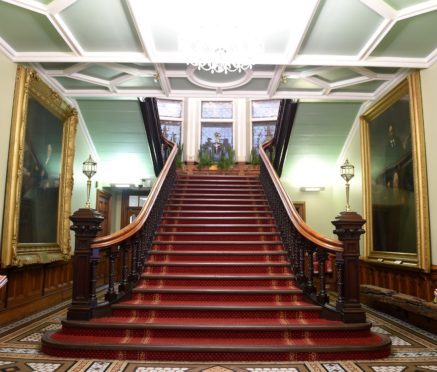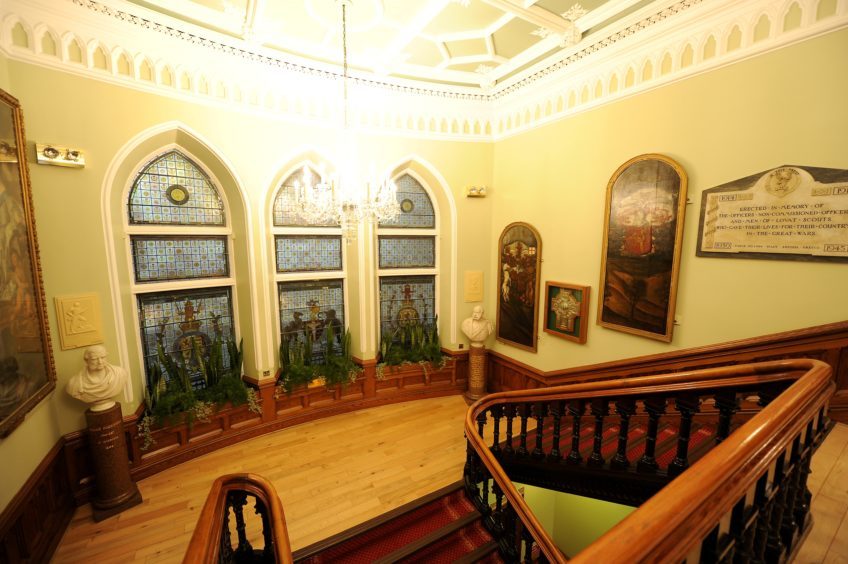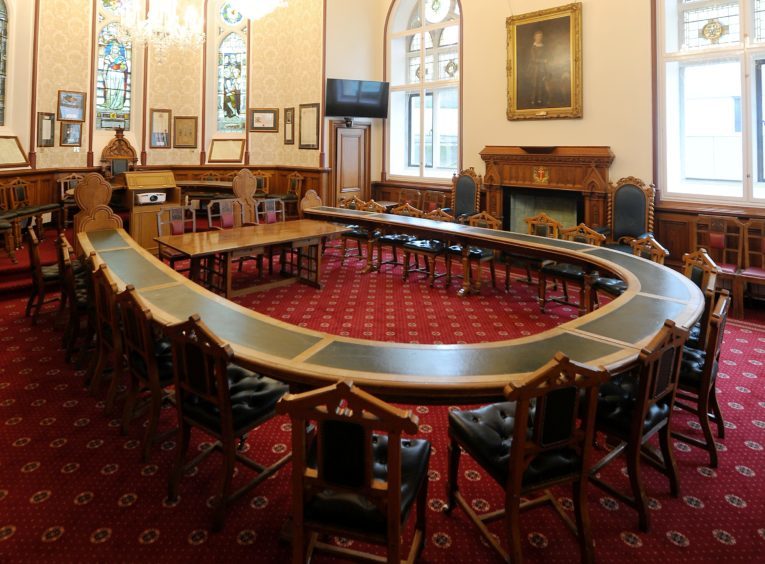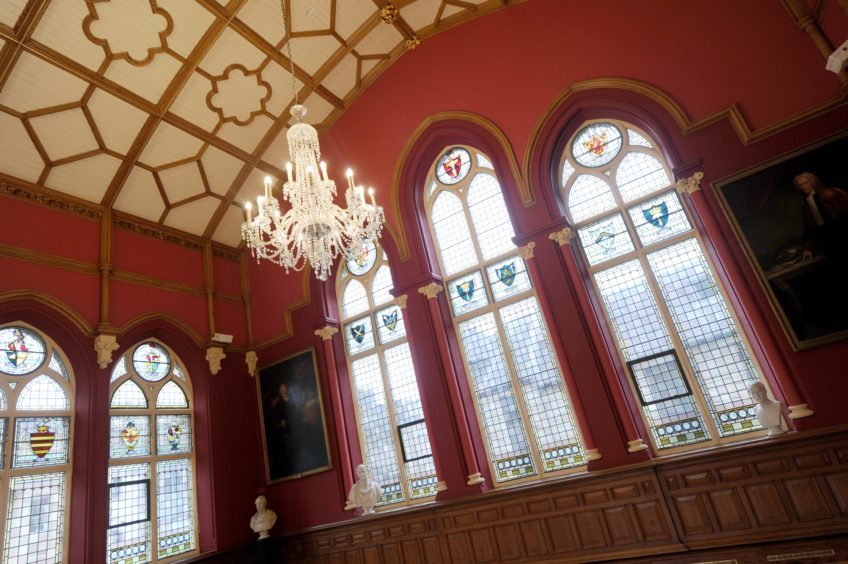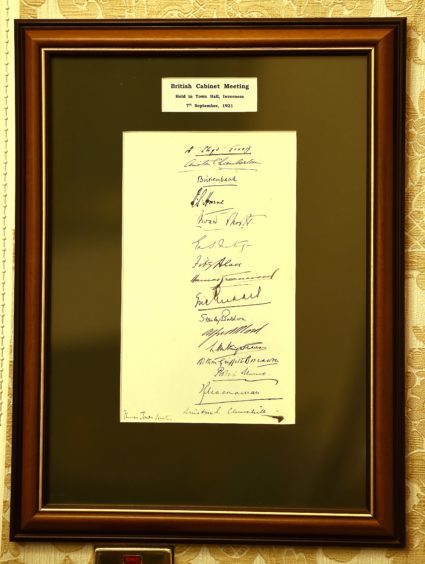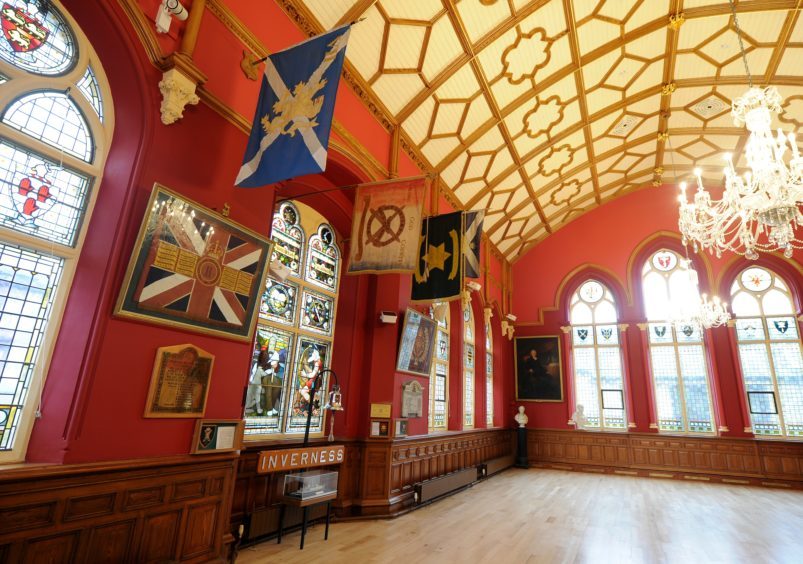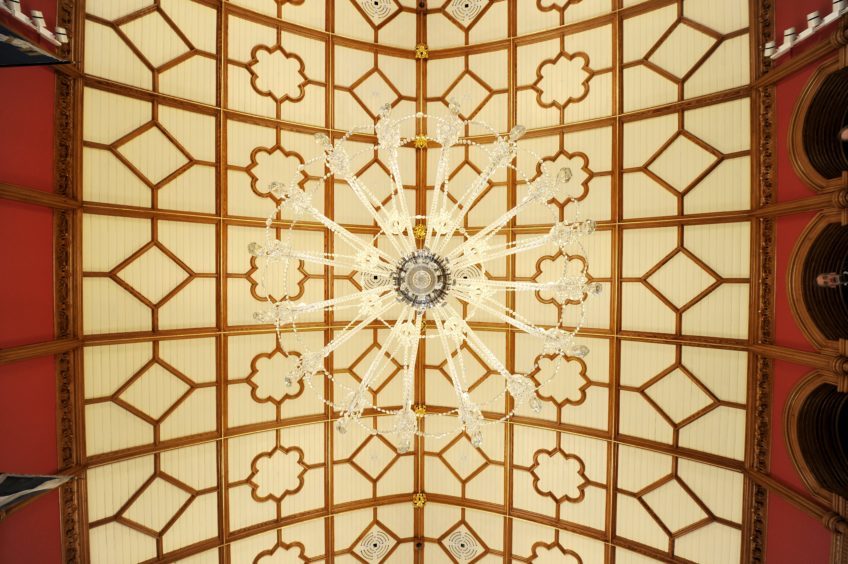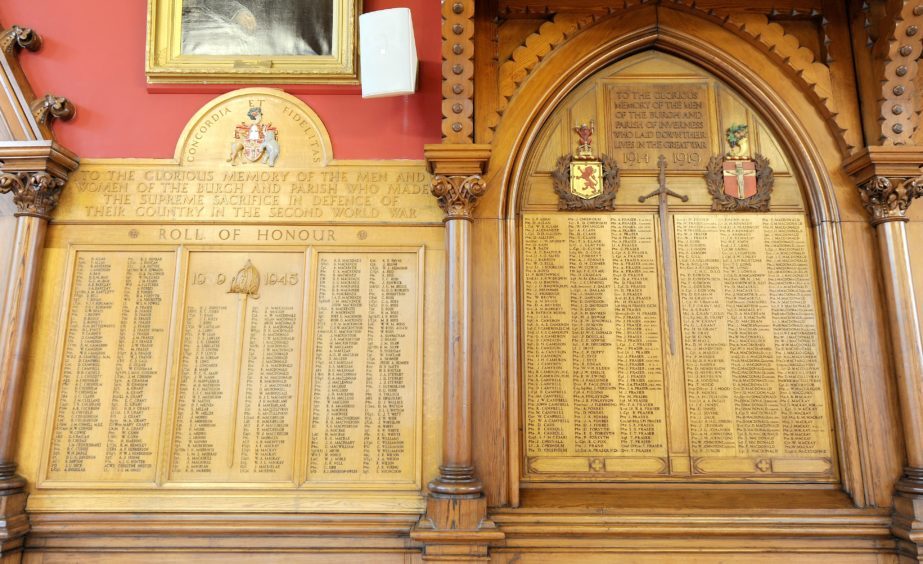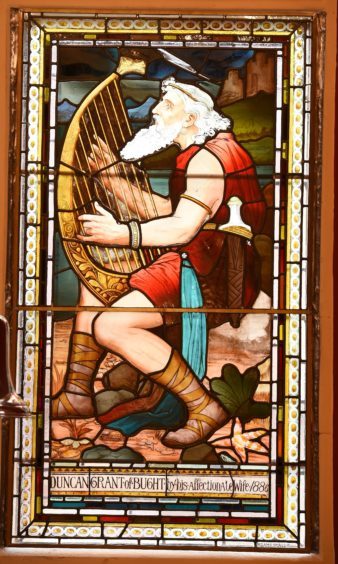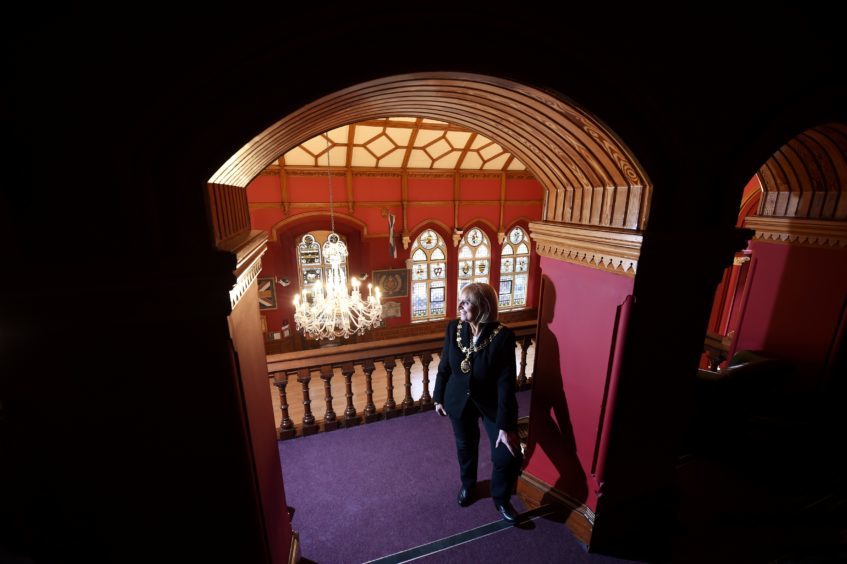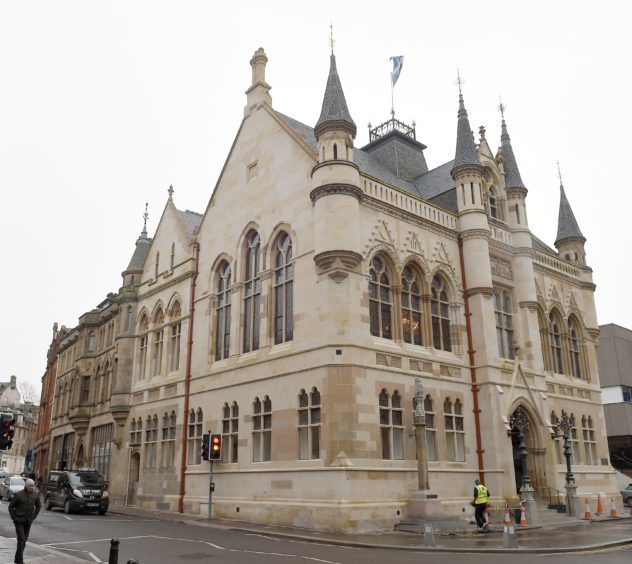The newly revamped Inverness Town House is to open its doors to the public this weekend following its £4.2million transformation.
The Victorian Grade A-listed building has been the subject of extensive renovation works over the past two years with the aim of restoring the 1882-built civic centre back to its former glory.
Almost £4million has been spent renovating both the west wing and the front, with the exterior kept under wraps – or behind scaffolding – for much of that time.
The grand opening on Saturday – between 9am and 4pm – and a second chance on Sunday – 11am to 4pm – will be the public’s first glimpse of the completed works.
Inverness Provost Helen Carmichael said: “I am more than delighted. It’s a lot of work that has gone on with the restoration outside and the renovation inside. I am hoping that everyone that comes to see it will be as delighted as I am.
“I think from the outside we have brought back a building that was always nice but people walked past it. Now they are stopping and taking photographs of it because it is quite like a fairy-tale castle – that’s what a little girl told me.
“I think from the inside we brought it back to the colours that it would have been back in 1882 and that was working with Historic Scotland and their architectural archivist who took scrapings and scraped back the wood through all the layers over the years. The colours that are here are reminiscent or as near as possible to what the colours would have been when the building was opened.
“Old buildings need a lot of work done to them so to now have this building that will last another 100 years, I am absolutely delighted.”
The tour will include the newly re-decorated main hall, the council chamber, staircase, stained glass windows, chandeliers and many historic artworks on display – including paintings of Bonnie Prince Charlie and Flora MacDonald.
The project has been funded by the Inverness Common Good Fund and Historic Environment Scotland.
Thomas Knowles, head of grants for Historic Environment Scotland, added: “This work ensures that a striking civic space, showing off Inverness’s Victorian heritage and contributing to the historic environment of the town, will remain a key part of the city’s townscape.”
The work
At a cost of around £4million, a range of changes have been made to both the interior and exterior of Inverness Town House – from newly decorated rooms to restoring historic relics showcasing the building’s rich history.
During the works, the stained-glass windows were restored, while stonework was repaired or replaced, mortars repointed and the roof repaired.
The interior staircase, chamber, and main hall have all been redecorated, with specialists eager to recreate the colour pallet used when the building first opened.
The chandeliers – which are scattered through the premises – have also been hand washed and polished before being reinstated into the building, alongside a number of historic paintings.
Provost Helen Carmichael said: “It was quite pale beforehand and now as you saw it’s a deep crimson. I think it brings out the ceiling well, without a doubt. It looks wonderful.
“The chandeliers are sparkling and every crystal has been hand washed and polished and then laid out to make sure that the jigsaw went back together.
“Also the stained-glass windows have been completely restored so the colours are back in them.”
Lost dogs last piece of the puzzle for Inverness Town House
Two stone dogs found after being missing for half a century have been reinstated at the town house in Inverness.
The two sculptures, which were part of the original Victorian building, disappeared decades ago. But they were discovered in unmarked crates in September, just days before scaffolding was put up outside the building as part of its refurbishment.
Renovation work began two years ago after the Scottish Government approved a £4.2 million pound project to restore the building.
A special ‘building wrap’ – costing £20,000 – has covered the building for the last two years depicting a full-scale image of the civic landmark.
The landmark was built in 1882 and was officially opened by the second son of Queen Victoria, Alfred as a civic centre.
The building made its mark on history by hosting the first cabinet meeting of Prime Minister Lloyd George’s British government ever held outside London in 1921.
Lloyd George was on holiday at Gairloch in Wester Ross when he learned that Ireland had rejected the King and Empire. He decided to call the cabinet in the Highland capitol rather than travel back to London.
